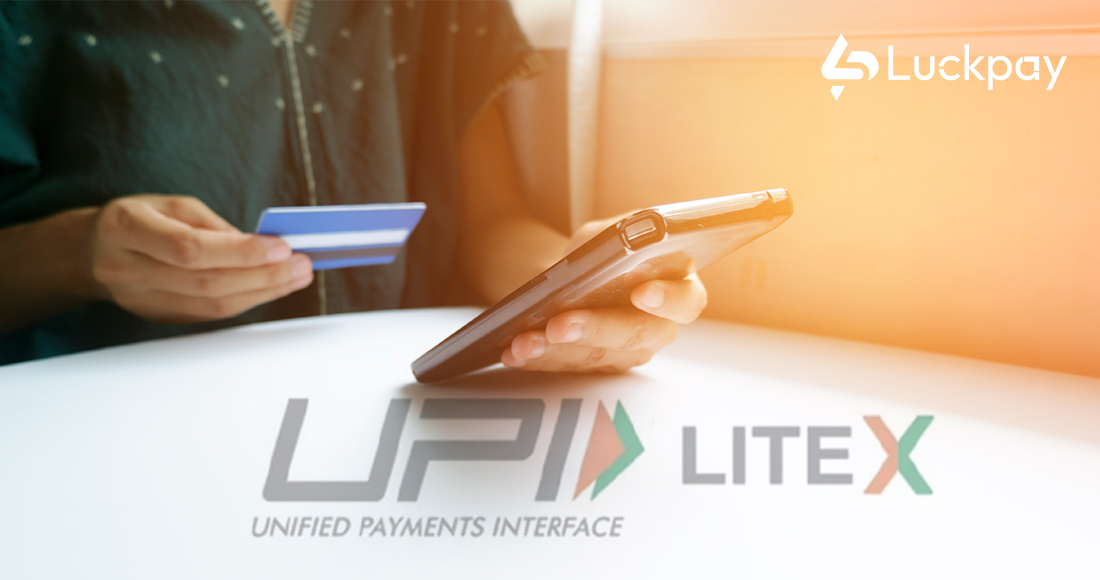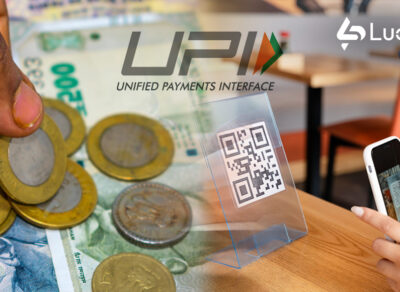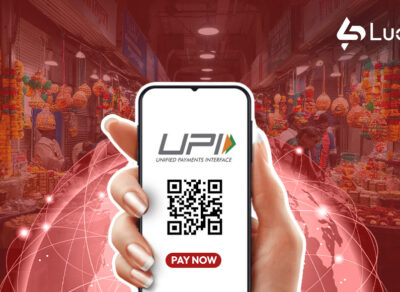Why UPI Lite is a Game-Changer for Low-Value Transactions

Digital payments in India have come a long way in a relatively short time, thanks to the Unified Payments Interface (UPI), which has transformed how people pay and get paid. Now, with the introduction of UPI Lite, small-value transactions are getting a boost, making even the smallest purchases more convenient and lightning-fast. Launched by the National Payments Corporation of India (NPCI) in 2022, UPI Lite was designed specifically for low-value transactions, targeting payments under ₹200—ideal for a quick cup of chai, a grocery run, or a bus fare.
Here’s a deep dive into how UPI Lite works and why it’s such a big deal for small payments in India.
What is UPI Lite?
UPI Lite is an extension of the UPI system, created to make low-value transactions smoother and faster by reducing the load on banks and the main UPI network. UPI Lite allows users to make small payments instantly without entering a UPI PIN, and it processes transactions directly from a digital wallet balance within the user’s UPI app.
The maximum balance for UPI Lite is currently set at ₹2,000, and individual transactions are capped at ₹200. This makes UPI Lite ideal for daily, low-value payments like snacks, groceries, or transport.
The Problem with Small Payments and How UPI Lite Solves It
While UPI has been a massive success for all types of payments, low-value transactions have presented unique challenges. Here are some key issues UPI Lite aims to solve:
- Network Congestion: Every UPI transaction requires processing by both the payer’s and the payee’s bank. For small transactions, this process is inefficient, adding strain on bank servers and slowing down the network, especially during peak hours. UPI Lite removes bank involvement in every small payment, reducing network congestion and making transactions faster.
- Transaction Declines and Failures: Low-value transactions are more likely to fail during peak hours due to overload. UPI Lite reduces the risk of transaction declines, as payments are completed directly from the UPI Lite balance, bypassing the bank infrastructure entirely for individual payments.
- Time-Consuming PIN Requirement: For most UPI payments, users must enter their UPI PIN, which can be cumbersome for frequent, low-value transactions. UPI Lite eliminates the need for a PIN, speeding up small payments while maintaining security.
- Bank Reconciliation Delays: Because small transactions require the same reconciliation as large transactions, they can create bottlenecks. UPI Lite doesn’t rely on bank account reconciliation for each transaction, helping reduce banking delays.
How Does UPI Lite Work?
UPI Lite is simple to set up and use. Here’s a step-by-step guide to how it works:
- Adding Funds: Users can load up to ₹2,000 into their UPI Lite balance through their UPI app. This top-up process is similar to adding funds to a digital wallet, and users can reload whenever needed.
- Making Payments: For payments under ₹200, users can select UPI Lite as the payment option. Payments are made instantly, without the need to enter a UPI PIN.
- Notification-Based Transactions: UPI Lite operates on the idea of real-time notifications. Users receive instant confirmations for every transaction, creating a record without placing load on bank servers.
- One-Way Debits: UPI Lite currently supports one-way transactions, meaning users can only make payments but not receive funds in their UPI Lite balance, ensuring the system remains simple and lightweight.
Benefits of UPI Lite: Why It’s a Game-Changer for Small Payments
UPI Lite offers several advantages that make it ideal for low-value transactions. Here’s why it’s poised to revolutionize small payments in India:
- Speed and Efficiency: UPI Lite payments are instant, as they bypass the need for bank involvement, making them significantly faster than traditional UPI payments. This is ideal for quick purchases, where speed matters.
- No PIN Hassle: For payments under ₹200, UPI Lite doesn’t require users to enter a UPI PIN, making small transactions less time-consuming and more user-friendly.
- Reduces Network Load: UPI Lite minimizes load on bank infrastructure by moving small transactions off the main UPI network. This improves the reliability and efficiency of the overall system, especially during busy times.
- Perfect for High-Frequency, Low-Value Transactions: UPI Lite is tailored for purchases that happen often but don’t involve large sums. This includes items like snacks, public transportation, and everyday necessities.
- Offline Functionality: While UPI Lite itself is not fully offline, users only need internet connectivity to top up their balance. For the transaction itself, UPI Lite can sometimes process payments with minimal connectivity, which is helpful for areas with weak signals.
- Enhanced Financial Inclusion: With UPI Lite, users without access to high-speed internet or advanced smartphones can still make digital payments easily. This feature has the potential to bring more people into the digital economy, including those in rural or low-connectivity regions.
Use Cases: Where UPI Lite Shines
UPI Lite is a perfect fit for a range of small, everyday transactions. Here’s how it’s being used in various scenarios:
- Street Vendors and Small Shops: Many small vendors and kirana shops prefer cashless payments but face challenges with unreliable internet or slow transactions. UPI Lite provides a hassle-free way to accept payments quickly.
- Public Transport and Commuting: In cities where people rely on buses, autos, and metro systems, UPI Lite can streamline fare payments, making it convenient for commuters and transport operators alike.
- Food and Beverage Purchases: For low-cost purchases like a cup of chai, snacks, or a quick meal, UPI Lite offers a simple and fast alternative to cash or conventional UPI payments.
- Quick Errands and Utility Bills: UPI Lite is also ideal for small utility bills or fast transactions at pharmacies, making it easier for customers to pay and businesses to operate efficiently.
How UPI Lite Stacks Up Against Wallets and Other Payment Methods
While digital wallets and UPI both support small payments, UPI Lite has unique advantages that set it apart:
- No Merchant Fees: Unlike wallets that charge a percentage-based transaction fee, UPI Lite transactions are free, which is a huge plus for small businesses.
- Bank Account-Based Security: UPI Lite is directly connected to the user’s bank account, which means that funds are securely managed by the bank, even if they are transferred to the Lite balance temporarily.
- No KYC Requirement: Unlike some wallets that require extensive KYC, UPI Lite simply uses the existing UPI account, making setup quick and easy.
- Universal Acceptance: UPI Lite can be used with the vast UPI ecosystem, which includes millions of vendors and service providers across India. Wallets, on the other hand, are often limited to specific merchants.
The Broader Impact of UPI Lite on India’s Digital Economy
UPI Lite is more than just a convenience feature; it’s a strategic move to digitize India’s micro-payments ecosystem. Here’s how UPI Lite is likely to impact the digital economy:
- Promoting a Cashless Society: By making it easy to go cashless for even the smallest purchases, UPI Lite supports the government’s Digital India initiative, accelerating the shift towards a fully digital economy.
- Encouraging Digital Literacy: UPI Lite introduces digital payments to individuals who may be new to UPI or digital transactions, making it an excellent stepping stone toward full financial inclusion.
- Supporting Small Businesses: Small vendors often rely on cash due to network limitations or transaction costs associated with digital wallets. UPI Lite gives these businesses an affordable, easy-to-use digital payment option, expanding their customer base and simplifying cash management.
- Reducing Cash Handling Costs: For businesses, reducing the volume of cash transactions helps cut down on the time and costs associated with handling and securing cash.
- Greater Accessibility in Rural and Low-Income Areas: UPI Lite’s simplicity and low connectivity requirements make it particularly beneficial for rural users and those with basic mobile phones, allowing more people to participate in the digital economy.
What’s Next for UPI Lite?
With its potential to transform small payments in India, UPI Lite is only getting started. The future could bring exciting developments, including:
- Higher Transaction Limits: NPCI may consider increasing the transaction cap as UPI Lite gains traction, making it viable for more types of payments.
- Offline Functionality: As UPI Lite’s infrastructure evolves, fully offline payments could become a reality, benefiting regions with inconsistent connectivity.
- Further Integration with Digital Services: UPI Lite could potentially integrate with public transportation systems, toll payments, and other essential services, making it indispensable for daily transactions.
Why UPI Lite is a Big Deal for Small Payments
UPI Lite is a game-changer, especially for low-value, high-frequency transactions. It removes the friction of cash handling and PIN requirements, bringing unmatched convenience to both consumers and merchants. As India moves closer to a cashless economy, UPI Lite stands out as an innovative solution that not only simplifies payments but also expands the reach of digital finance across the country.
With UPI Lite, even small payments can have a big impact, helping transform India’s payment landscape one transaction at a time.



